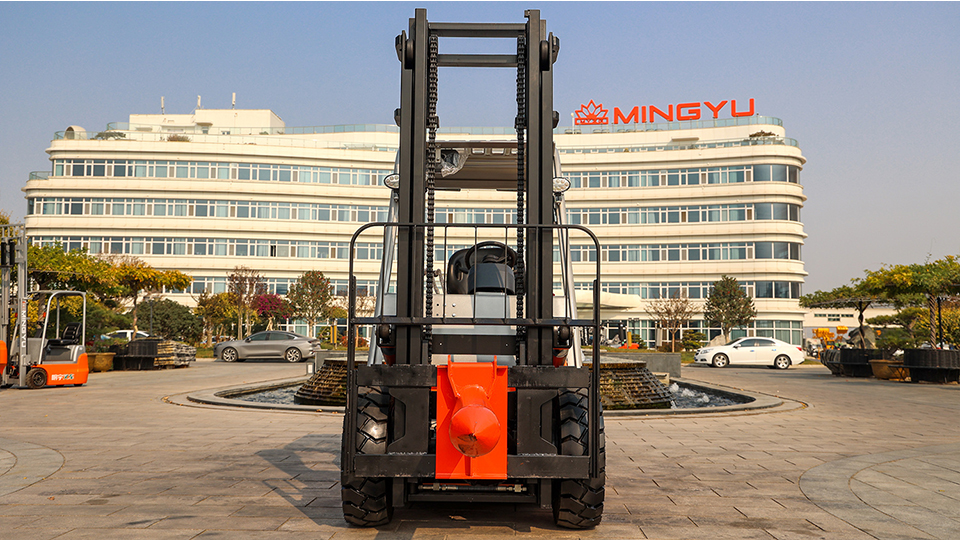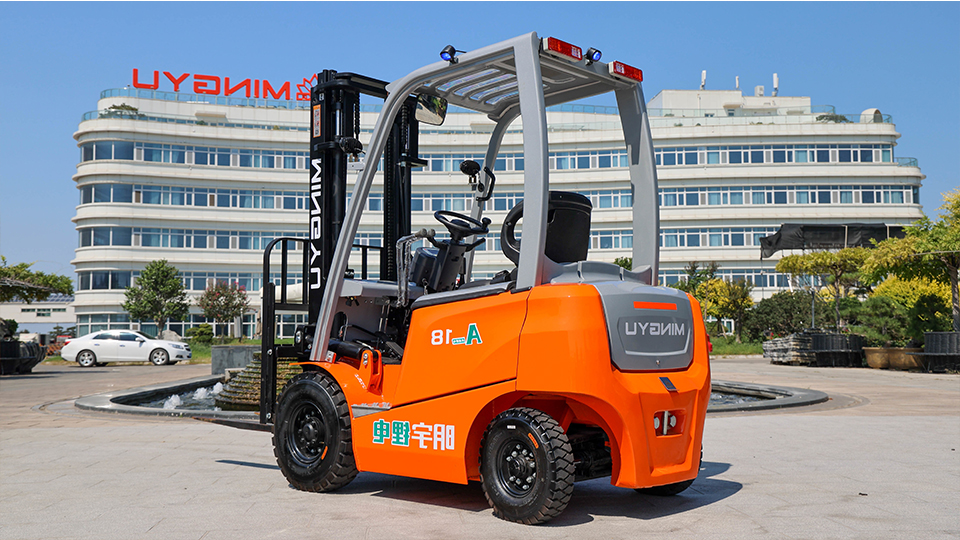How to maintain the tires of a 3-ton diesel forklift?
Introduction
The tires of a 3-ton diesel forklift are critical components that directly impact its performance, safety, and longevity. Proper tire maintenance is essential to ensure the forklift operates efficiently, reduces downtime, and minimizes the risk of accidents. This article provides a comprehensive guide on how to maintain the tires of a 3-ton diesel forklift, covering inspection, cleaning, inflation, rotation, and replacement procedures.
Importance of Tire Maintenance
Tires are the only point of contact between the forklift and the ground, making them crucial for stability, traction, and maneuverability. Neglecting tire maintenance can lead to reduced efficiency, increased fuel consumption, and potential safety hazards. Regular maintenance ensures optimal performance and extends the life of the tires, ultimately saving on replacement costs.
Regular Inspection
Regular inspection is the first step in maintaining the tires of a 3-ton diesel forklift. Here are some key points to check during each inspection:
-
Tread Depth: The tread depth should be measured regularly using a tread depth gauge. The minimum legal tread depth for forklift tires is typically 2/32 of an inch. Worn-out treads reduce traction and increase the risk of slipping, especially on wet surfaces.
-
Tire Pressure: Check the tire pressure at least once a week, preferably before starting the forklift. Proper inflation ensures even wear, improves fuel efficiency, and enhances stability. The recommended tire pressure for a 3-ton diesel forklift is usually between 20 and 30 psi, depending on the specific tire model and load capacity.
-
Visual Inspection: Look for any signs of damage, such as cuts, cracks, or bulges. These can indicate potential tire failure and should be addressed immediately. Also, check for embedded debris like nails or stones that can cause punctures.
-
Alignment and Balance: Misaligned or unbalanced tires can cause uneven wear and reduce the forklift's stability. Ensure that the tires are properly aligned and balanced during regular maintenance checks.

Cleaning and Debris Removal
Cleaning the tires is an important part of maintenance, as dirt and debris can accumulate and cause damage over time.
-
Remove Debris: Use a tire pick or a similar tool to remove any embedded debris from the treads. This helps prevent punctures and uneven wear.
-
Washing: Regularly wash the tires with water and a mild detergent to remove dirt and grime. Avoid using harsh chemicals or high-pressure washers, as they can damage the rubber.
-
Drying: After washing, ensure the tires are thoroughly dried to prevent moisture from causing corrosion or other damage.
Proper Inflation
Maintaining the correct tire pressure is crucial for the performance and longevity of the tires.
-
Check Pressure Regularly: Use a reliable tire pressure gauge to check the pressure at least once a week. Inflate the tires to the manufacturer's recommended pressure, which can be found in the owner's manual or on the tire sidewall.
-
Avoid Over-Inflation: Over-inflated tires can lead to reduced traction and increased wear on the center of the tread. They are also more susceptible to damage from impacts.
-
Avoid Under-Inflation: Under-inflated tires can cause uneven wear, reduced fuel efficiency, and increased risk of blowouts. They also affect the forklift's stability and handling.

Tire Rotation
Rotating the tires helps ensure even wear and extends their lifespan.
-
Rotation Schedule: Rotate the tires every 500 to 1,000 hours of operation, depending on the manufacturer's recommendations. This helps distribute wear evenly across all tires.
-
Rotation Pattern: Follow the recommended rotation pattern provided by the tire manufacturer. Common patterns include front-to-back or side-to-side rotation.
-
Marking Tires: Mark the tires with chalk or a marker to track their positions and ensure proper rotation.
Monitoring for Wear and Damage
Regularly monitor the tires for signs of wear and damage to prevent accidents and reduce downtime.
-
Uneven Wear: Check for uneven wear patterns, such as cupping or feathering. These can indicate misalignment or improper inflation.
-
Cracks and Cuts: Inspect the sidewalls and treads for cracks, cuts, or punctures. These can weaken the tire structure and lead to blowouts.
-
Bulges and Blisters: Look for bulges or blisters on the tire surface, which can indicate internal damage or air leaks.
-
Tread Separation: Check for any signs of tread separation, which can be a serious safety hazard.
Storage and Handling
Proper storage and handling of spare tires can help maintain their quality and extend their lifespan.
-
Storage Conditions: Store spare tires in a cool, dry, and dark place, away from direct sunlight and extreme temperatures. Avoid storing them near chemicals or electrical equipment.
-
Handling: When handling tires, use proper lifting techniques to avoid injury. Use a tire lift or other appropriate equipment to move heavy tires safely.
When to Replace Tires
Knowing when to replace the tires is crucial for maintaining the safety and performance of the forklift.
-
Tread Depth: Replace tires when the tread depth reaches the minimum legal limit of 2/32 of an inch.
-
Damage: Replace tires that show significant damage, such as deep cuts, cracks, or bulges.
-
Age: Even if the tires appear to be in good condition, it's recommended to replace them after five to seven years of service, as rubber degrades over time.
-
Irreparable Damage: If a tire has suffered irreparable damage, such as a blowout or severe puncture, it should be replaced immediately.
Professional Maintenance
Regular professional maintenance can help identify potential issues early and ensure the tires are in optimal condition.
-
Scheduled Maintenance: Follow the manufacturer's recommended maintenance schedule, which typically includes tire inspections, rotations, and pressure checks.
-
Professional Inspection: Have the tires inspected by a professional technician at least once a year. They can identify issues that may not be visible during routine checks.
-
Alignment and Balancing: Regularly schedule alignment and balancing services to ensure the tires wear evenly and the forklift handles properly.
Conclusion
Maintaining the tires of a 3-ton diesel forklift is essential for ensuring its performance, safety, and longevity. Regular inspections, proper inflation, cleaning, rotation, and timely replacement are key to extending the life of the tires and reducing downtime. By following the guidelines outlined in this article, forklift operators can ensure their tires remain in optimal condition, ultimately improving the overall efficiency and safety of their operations.


